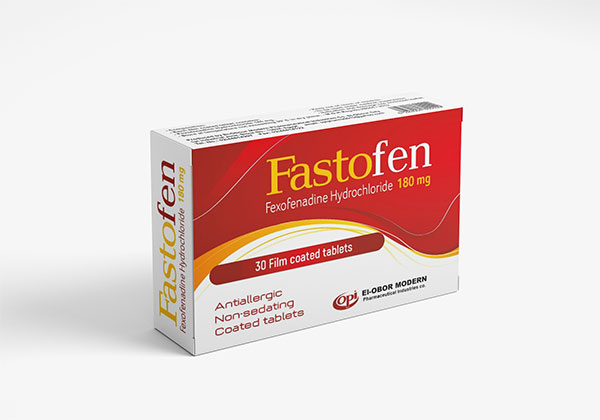Fastofen 180 mg
Composition
Each film coated tablet contains:
Active ingradient:
Fastofen 180 mg: Each film coated tablet contains fexofenadine hydrochloride 180 mg.
Inactive ingradient:
Lactose monohydrate, Maize starch, Croscarmellose sodium, Magnesium stearate,opadry pink,white beeswax. Pharmaceutical form Film Coated Tablets.
INDICATIONS AND USAGE
1.1 Seasonal Allergic Rhinitis FASTOFEN is indicated for the relief of symptoms associated with seasonal allergic rhinitis in adults and children 2 years of age and older. 1.2 Chronic Idiopathic Urticaria FASTOFEN is indicated for treatment of uncomplicated skin manifestations of chronic idiopathic urticaria in adults and children 6 months of age and older
DOSAGE AND ADMINISTRATION
Seasonal Allergic Rhinitis and Chronic Idiopathic Urticaria Adults and Children 12 Years and Older. The recommended dose of FASTOFEN tablets is 60 mg twice daily or 180 mg once daily with water. A dose of 60 mg once daily is recommended as the starting dose in patients with decreased renal function. Children 6 to 11 Years. The recommended dose of FASTOFEN tablets is 30 mg twice daily with water. A dose of 30 mg once daily is recommended as the starting dose in pediatric patients with decreased renal function.






